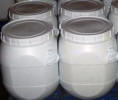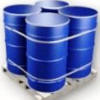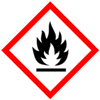| Anmol Chemicals is the pioneer manufacturers of Acetylacetone Peroxide, Pharmaceutical Excipients Fragrance & Flavor chemicals in India. We supply Halal and Kosher Acetylacetone Peroxide made in an ISO9001, ISO22000 (FSSC22000) and cGMP certified facility. Our group has several manufacturing facilities spread across the world, supported by toll manufacturers and representatives in UAE, Europe, Africa, USA, China and has several associated manufacturing facilities spread across India. All the Information on Physics, Chemistry, Applications, Uses and Technology on Manufacture of Acetylacetone Peroxide is in these pages. |
| The units have one or more of the certifications like FDA GMP, ISO 9001, ISO 22000, HACCP, REACH, Kosher & Halal |




Acetylacetone Peroxide SDS of Manufacturers
Acetylacetone Peroxide Properties and Specifications of Manufacturers
Acetylacetone Peroxide SDS, Safety Data Sheet
MSDS Sheet, Material Safety Data Sheet
1. Product & Company Identification
Product Name & Other Names: Acetylacetone Peroxide or Acetyl Acetone Peroxide
CAS No.: 37187-22-7 from Pubchem.
EINECS EC Number: 253-384-9
Molecular Weight: 130.1
Chemical Formula: C5H6O4
Relevant identified uses of the substance or mixture and uses advised against: Industrial Use.
2. Hazards Identification
GHS, Globally Harmonized System Classification in accordance with 29 CFR 1910
Classification according to Regulation (EC) No 1272/2008
Organic peroxides (Type D), H242
Skin corrosion (Category 1B), H314
Reproductive toxicity (Category 1B), H360D
Specific target organ toxicity - single exposure (Category 3), Respiratory system, H335
Labeling according GHS & Regulation (EC) No 1272/2008
GHS Label Elements  Flammable |
GHS Label Elements |
GHS Label Elements |
Signal Word: Danger
Hazard Statements:
H242 Heating may cause a fire.
H314 Causes severe skin burns and eye damage.
H335 May cause respiratory irritation.
H360D May damage the unborn child.
To the best of our knowledge, the chemical, physical, and toxicological properties have not been thoroughly investigated.
Precautionary Statements - Prevention
P201: Obtain special instructions before use.
P202: Do not handle until all safety precautions have been read and understood.
P210: Keep away from heat/sparks/open flames/hot surfaces. - No smoking.
P220: Keep/Store away from clothing/combustible materials
P221: Take any precaution to avoid mixing with combustibles
P261: Avoid breathing dust.
P234: Keep only in original container.
P264: Wash face, hands and any exposed skin thoroughly after handling
P270: Do not eat, drink or smoke when using this product
P280: Wear protective gloves/ protective clothing/ eye protection/ face protection
Precautionary Statements - Response
P301+330+331: IF SWALLOWED: Rinse mouth. Do NOT induce vomiting.
P304 + P341: IF INHALED: If breathing is difficult, remove to fresh air and keep at rest in a position comfortable for breathing.
P305 + P351 + P338: IF IN EYES: Rinse cautiously with water for several minutes. Remove contact lenses, if present and easy to do. Continue rinsing.
P314: Get Medical advice/attention if you feel unwell.
P363: Wash contaminated clothing before reuse.
P333 + P313: If skin irritation or rash occurs: Get medical advice/ attention.
P337 + P313: If eye irritation persists: Get medical advice/ attention
P342 + P311: If experiencing respiratory symptoms: Call a POISON CENTER or doctor.
P362: Take off contaminated clothing and wash before reuse.
P370 + P378: In case of fire: Use water for extinction
Precautionary Statements - Storage
P405: Store locked up.
P420: Store away from other materials.
P403+235: Store in a well ventilated place. Keep cool.
P501: Dispose of contents/container in accordance with local, regional, national, international regulations.
Classification according to EU Directives 67/548/EEC or 1999/45/EC:
Hazard Symbols:
F = Flammable.
C = Corrosive.
Risk Phrases:
R11 Highly flammable.
R34 Causes burns.
R41 Risk of serious damage to eyes.
R61 May cause harm to the unborn child.
3. Composition/Information on Ingredients
Product Name & Other Names: Acetylacetone Peroxide or Acetyl Acetone Peroxide
CAS No.: 37187-22-7 from Pubchem.
EINECS EC Number: 253-384-9
Percentage: 33.5% to 36.5% in a non-hazardous solvent.
4. First Aid Measures
Always seek medical attention after first aid measures are provided.
Inhalation: Remove to fresh air. If not breathing, give artificial respiration. If breathing is difficult, give oxygen. Get medical attention.
Ingestion: If swallowed, do not induce vomiting. Give large quantities of water. Never give anything by mouth to an unconscious person. Get medical attention immediately.
Skin Contact: In case of contact, immediately flush skin with plenty of water for at least 15 minutes while removing contaminated clothing and shoes. Cover the irritated skin with an emollient. Cold water may be used. Wash clothing & shoes before reuse. Get medical attention.
Eye Contact: Check for and remove any contact lenses. In case of contact, immediately flush eyes with plenty of water for at least 15 minutes. Cold water may be used. Get medical attention.
Note to physicians: Treat symptomatically.
5. Fire Fighting Measures
Fire: Flammable. Substance is a strong oxidizer and its heat of reaction with reducing agents or combustibles may cause ignition. Heating oxygen which may intensify combustion in an existing fire. It has SADT or self-accelerating decomposition temperature of 60C.
Explosion: An explosion hazard on heating and contact with other oxidizing and reducing agents.
Special hazards arising from the substance or mixture: Carbon oxides and toxic fumes.
Fire Extinguishing Media: Use water spray, alcohol-resistant foam, dry chemical or carbon dioxide. Use means suitable for extinguishing surrounding fire. Cool containers with flooding quantities of water until well after fire is out.
Special Information: In the event of a fire, wear full protective clothing and NIOSH-approved self-contained breathing apparatus with full face piece operated in the pressure demand or other positive pressure mode. Sealed containers may rupture when heated.
6. Accidental Release Measures
Personal precautions, protective equipment and emergency procedures: Avoid breathing dust/fumes/gas/mist/vapors/spray. Use individual protective equipment (waterproof boots, suitable protective clothing, safety glasses, etc.). Restrict unprotected personnel from the area. Prevent any contact with hot surfaces. Do not approach facing the wind. Do not touch the spilled material.
Environmental precautions: Do not let the product enter drains, soil or water sources.
Methods and materials used for containment Cleanup procedures and Storage:
Small Spill: Use appropriate tools to put material in a convenient waste disposal container.
Large Spill: It is an oxidizing material. Use personal protective equipment. Avoid breathing vapors, mist or gas. Ensure adequate ventilation. Evacuate personnel to safe areas. Stop leak if without risk. Avoid contact with a combustible material (wood, paper, oil, clothing etc.). Do not touch spilled material. Prevent entry into sewers. Eliminate all ignition sources. Avoid penetration into waterways, sewers, soil or groundwater. Contain spillage. Cover with an inert, non-combustible absorbent material, (e.g. sand, earth, diatomaceous earth, vermiculite). Vacuum or sweep-up and remove to an approved disposal container. Local authorities should be advised if significant spillages cannot be contained.
7. Handling and Storage
Precautions for safe handling: Avoid exposure - obtain special instructions before use. Apply according to good manufacturing and industrial hygiene practices. Wear personal protective equipment. Ensure proper ventilation. Handle product only in closed system or provide appropriate exhaust ventilation at machinery. Wash thoroughly after handling. Do not drink, eat or smoke while handling. Avoid contact with skin, eyes and clothing. Minimize dust generation. Avoid breathing dust/fumes/gas/mist/vapors/spray. Avoid contact with eyes, skin, and clothing. Keep container tightly closed. Avoid ingestion and inhalation. Use individual protective equipment (waterproof boots, suitable protective clothing, safety glasses, etc.). Prevent any contact with hot surfaces.
Conditions for safe storage, including any incompatibilities: Store in cool, dry and ventilated area away from heat sources and protected from sunlight in tightly closed original container. Keep air contact to a minimum. Do not leave the material container open. Store protected from heat, sparks and ignition sources and incompatible materials. Avoid contact with skin and eyes. Avoid inhalation of dust/mist/vapor. Do not store with incompatible materials like reducing agents, organic material, water and powdered metals especially aluminum, acids, bases, halides, oxidizing agents, combustible materials.
Keep away from heat and sources of ignition - No smoking. Keep in a tightly closed container, stored at temperature of 2C to 8C. Organic peroxides and self-reacting hazardous materials. Recommended storage temperature 2C - 8C. Protect against physical damage. Isolate from incompatible substances. Separate from combustibles, organic or other readily oxidizable materials. Avoid storage on wood floors. Containers of this material may be hazardous when empty since they retain product residues.
8. Exposure Controls/Personal Protection
Airborne Exposure Limits: Contains no substances with occupational exposure limit values.
Ventilation System: A system of local and/or general exhaust is recommended to keep employee exposures below the Airborne Exposure Limits. Local exhaust ventilation is generally preferred because it can control the emissions of the contaminant at its source, preventing dispersion of it into the general work area.
Personal Respirators (NIOSH Approved): For conditions of use where exposure to dust or mist is apparent and engineering controls are not feasible, a particulate respirator (NIOSH type N95 or better filters) may be worn. If oil particles (e.g. lubricants, cutting fluids, glycerin, etc.) are present, use a NIOSH type R or P filter. For emergencies or instances where the exposure levels are not known, use a full-face positive-pressure, air-supplied respirator. WARNING: Air-purifying respirators do not protect workers in oxygen-deficient atmospheres.
Skin Protection: Wear protective gloves and clean body-covering clothing.
Eye Protection: Use chemical safety goggles. Maintain eye wash fountain and quick-drench facilities in work area.
9. Physical and Chemical Properties
Appearance: Clear colorless liquid.
Odor: Typical
Odor threshold: Not available.
pH: Not available.
Relative density: 1.024
Melting point/freezing point: Not available.
Initial boiling point and boiling range: 93C (55 torr).
Flash point: 78C.
Auto-ignition temperature: Not available.
Decomposition temperature: Not available.
Upper/lower flammability or explosive limits: Not available.
Vapor pressure: Not available.
Vapor density: Not available.
Evaporation rate: Not available.
Flammability (solid, gas): Not available.
Partition coefficient: n-octanol/water: Not available.
Solubility(ies): Soluble in water.
Viscosity: 21 mPa.s.
10. Stability and Reactivity
Stability: Stable under recommended conditions of use and storage.
Hazardous Decomposition Products: Burning may produce carbon oxide and toxic fumes. Oxygen is released which supports combustion.
Hazardous Polymerization: Will not occur
Incompatibilities: Reducing agents, organic material, water and powdered metals especially aluminum. Acids, Bases, Halides, Oxidizing agents, Strong reducing agents, Combustible materials.
Conditions to Avoid: Combustible materials and incompatibles. Heat, flames, and sparks.
11. Toxicological Information
Oral rat LD50: Not available
Carcinogenic Effects: Not a reported carcinogen by IARC, NTP, ACGIH, OSHA.
Mutagenic Effects: No information available
Reproductive Effects: No information available.
Developmental Effects: No information available.
Teratogenicity: No information available.
12. Ecological Information
Toxicity to fish: No information available.
Persistence and Degradability: Soluble in water Persistence is unlikely.
Bioaccumulation/ Accumulation: No information available.
Mobility: Will likely be mobile in the environment due to its water solubility.
Results of PBT and vPvB assessment: No data available for assessment.
13. Disposal Considerations
Whatever cannot be saved for recovery or recycling should be handled as hazardous waste and sent to a RCRA approved waste facility. Processing use or contamination of this product may change the waste management options. State and local disposal regulations may differ from federal disposal regulations. Dispose of container and unused contents in accordance with law.
14. Transport Information
Domestic (Land USA) and ADR/RID
UN/NA: UN3105
Proper Shipping Name: ORGANIC PEROXIDE TYPE D, LIQUID (Acetylacetone Peroxide)
Hazard Class: 5.2; Packing Group: Not assigned.
International (Water, I.M.O.) IMDG & IATA
UN/NA: UN3105
Proper Shipping Name: ORGANIC PEROXIDE TYPE D, LIQUID (Acetylacetone Peroxide)
Hazard Class: 5.2; Packing Group: Not assigned.
15. Regulatory Information
USA: No further data available.
Section 16 - Additional Information
European Labeling in Accordance with EC Directives:
H242 Heating may cause a fire.
H314 Causes severe skin burns and eye damage.
H335 May cause respiratory irritation.
H360D May damage the unborn child.
Section 16 - Additional Information
Disclaimer:
**************************
Our company provides this MSDS sheet in good faith but makes no representation as to its comprehensiveness or accuracy. This Acetylacetone Peroxide SDS sheet is intended only as a guide to the appropriate precautionary handling of the material by a properly trained person using this product. The above information has been compiled from various sources and has the possibility of discrepancy and being out-dated information. Individuals receiving the information must exercise their independent judgment and do further search in determining its appropriateness for a particular purpose. In no case shall our company be liable to loss or damages by the product user.
**************************
Acetylacetone Peroxide Manufacturers
Anmol Chemicals
S-8, SARIFA MANSION, 2ND FLANK ROAD, CHINCHBUNDER, MUMBAI 400009, INDIA
TEL: (OFFICE) 91-22-23770100, 23726950, 23774610, 23723564. FAX: 91-22-23728264
e-mail: anmolc@mtnl.net.in

Exports to USA, Canada, UAE, Dubai, South Africa, Tanzania, Kenya, Nigeria, Egypt, Uganda, Turkey, Mexico, Brazil, Chile, Argentina, Europe Netherlands, Italy, Spain, Germany, Portugal, France, Malaysia, Indonesia, Thailand, Korea, Vietnam, Japan, etc.
Copyright and Usual Disclaimer is Applicable. 26 December, 2021
Barter
They who love thee on this earth, keep calling on thee and chanting thy beads
Lest thou forgetest.
They assign the credit of their hard work to your blessings
They keep you amused.
They come to thy temple with baskets of fruits, as if you were a glutton
They deny the same to their children.
They offer you milk for a bath and burn the ghee
They hardly understand the meaning of it.
They bring gold and diamonds. They come with beating of drums
They love to advertise their offerings.
They offer you a small bribe as advance for booty, called lottery
They love to dream.
I do not bow down at your door
I do not bargain for booty
Your promise of the heaven does not lure me
Your hell-fire does not scare me
I do not even know the proper method of prayer
I do not offer any thing to you
Ages have gone by and I have not seen you my lord
Yet my love for you keeps waiting for you

